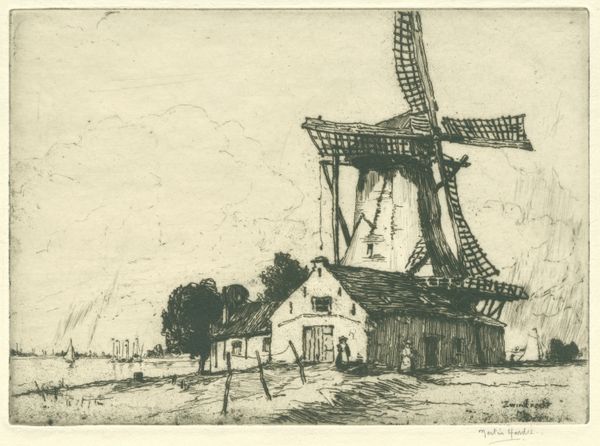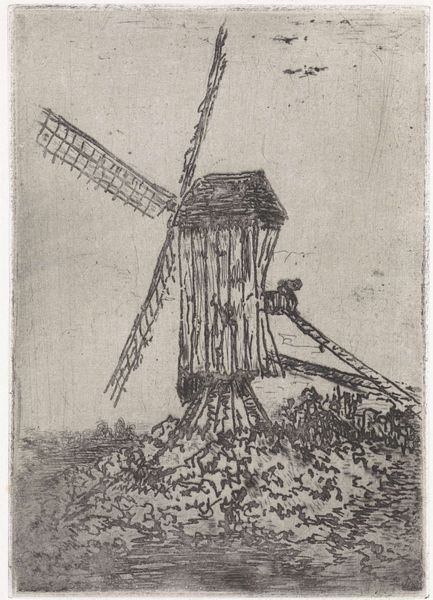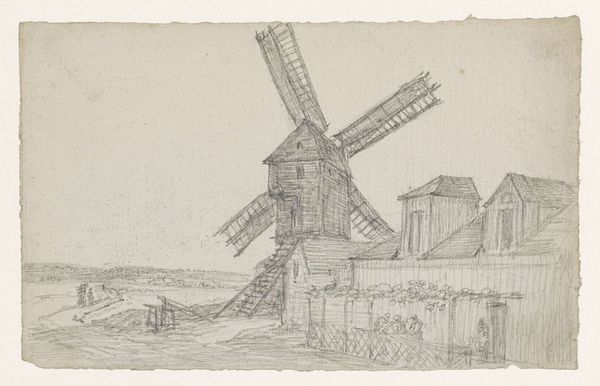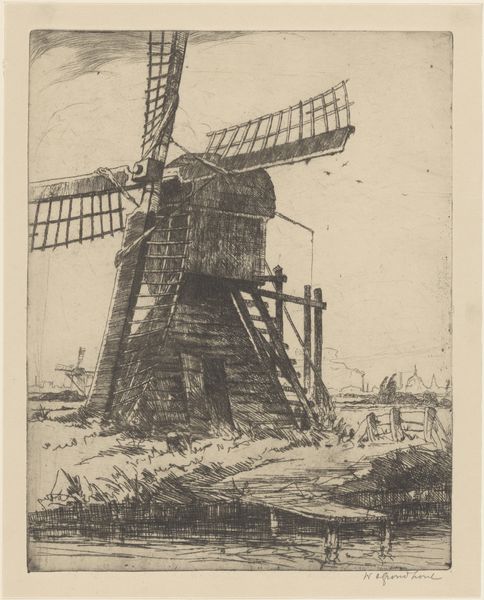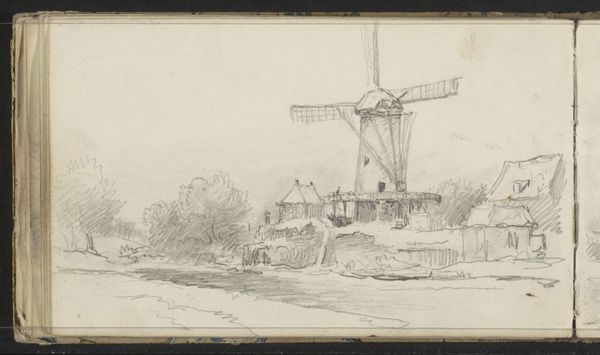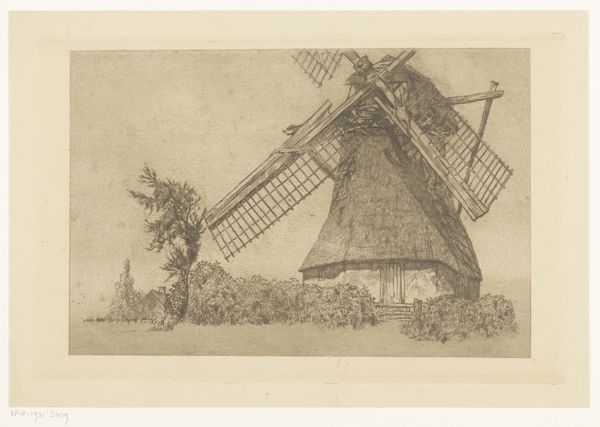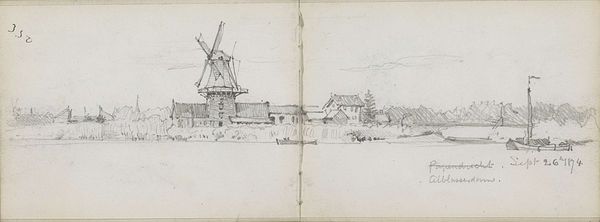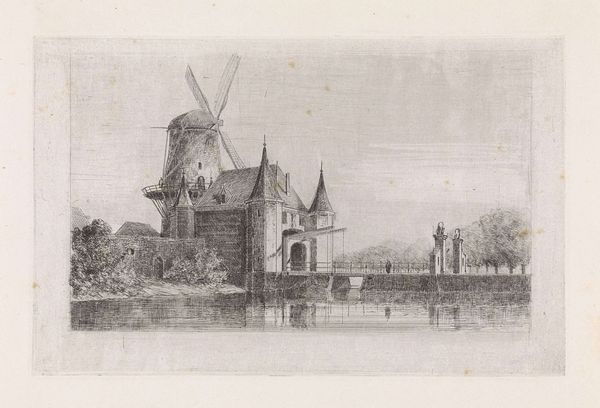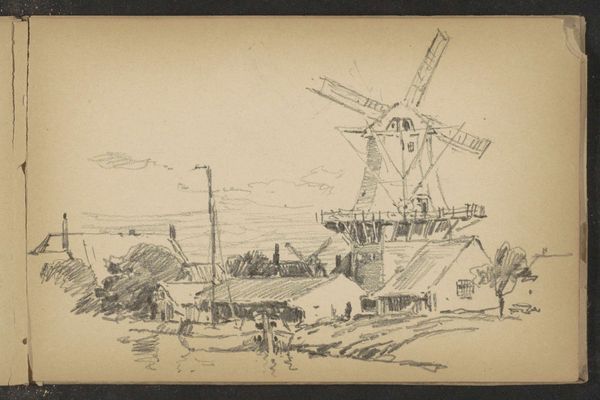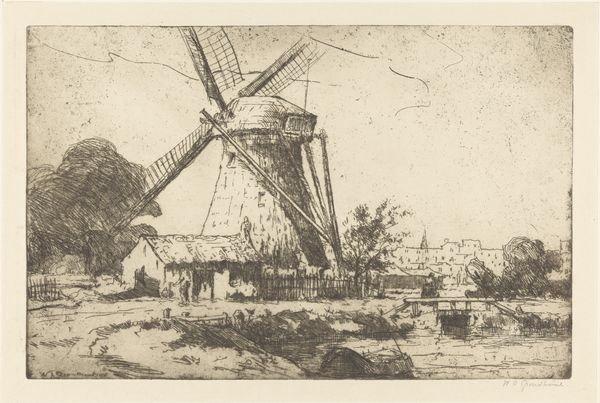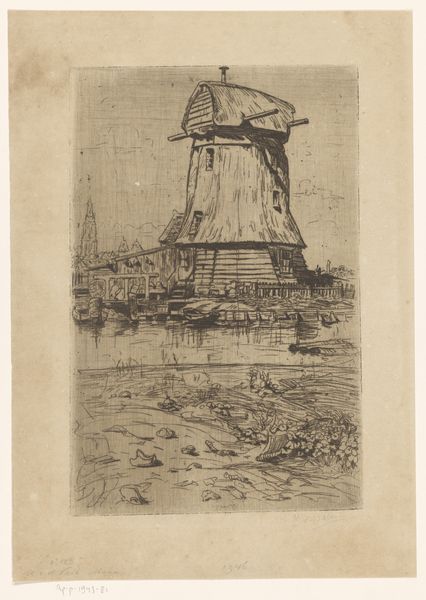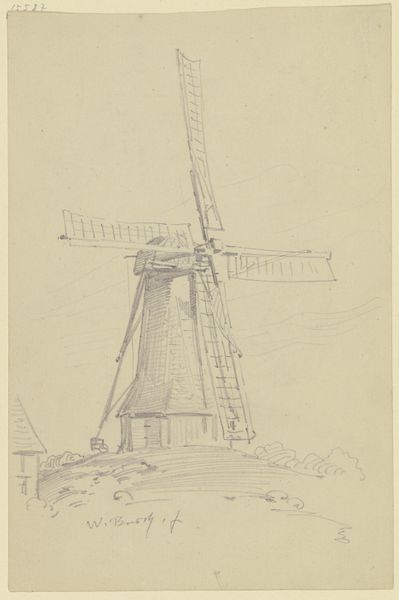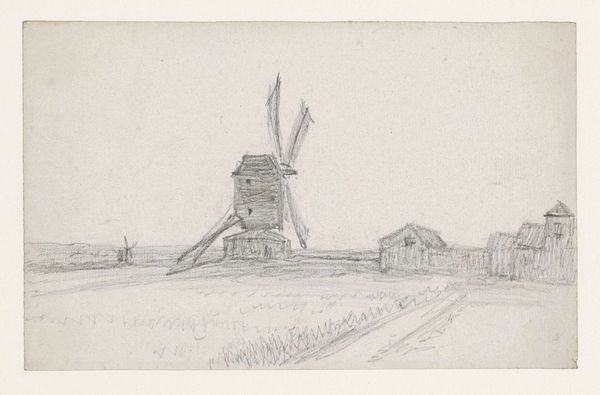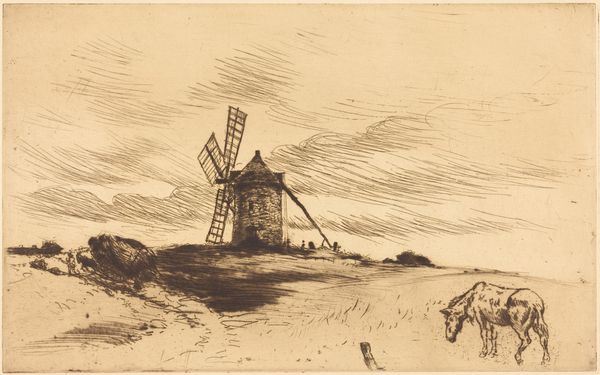
drawing, pencil
#
drawing
#
impressionism
#
pencil sketch
#
landscape
#
pencil
#
cityscape
#
post-impressionism
Copyright: Public Domain: Artvee
Editor: So, this is Van Gogh’s pencil drawing of the Moulin de la Galette. There isn't a date on it, but I'm struck by how the upward sweep of the stairs draws my eye, almost as if pulled by the windmill. How would you interpret this work? Curator: This drawing offers us a glimpse into Van Gogh’s engagement with the Montmartre district of Paris, a neighborhood rife with artistic and social ferment. We can see that the mill is elevated above the streets. Consider this image as a cultural text, illustrating the spaces of leisure and labor in a rapidly modernizing city. What social classes might have frequented this area? Editor: Probably a mix, right? Artists, writers, but also working-class people looking for a cheap place to enjoy themselves. It's interesting to think about who is using these spaces. Curator: Exactly. Montmartre was a liminal space, a place of encounter between different social groups. Van Gogh's depiction, rendered in stark pencil lines, hints at the gritty reality beneath the veneer of bohemian gaiety. Think about the positioning of the viewer and the absence of people: what message do you think this composition gives to the spectator? Editor: It feels like a critical observation from a distance. He's showing us the physical climb to this site of entertainment, not the carefree celebration itself. It could be saying something about access, who gets to participate. Curator: Precisely. This brings us to questions of identity, class, and power. This isn't just a pretty landscape; it's a socio-political statement embedded in the visual language of Impressionism and Post-Impressionism. What did you notice or learn in this exchange? Editor: I definitely see it differently now! Thinking about the social commentary within what looks like a simple landscape really adds depth.
